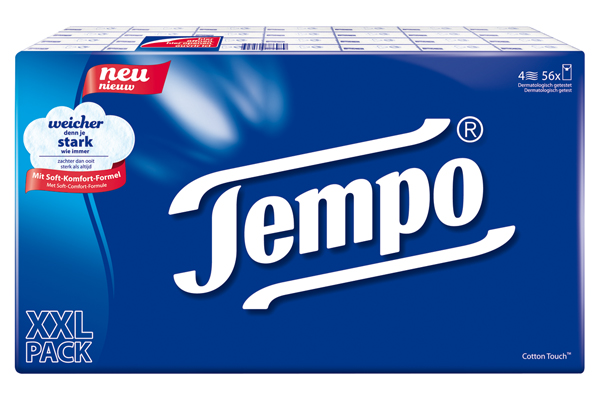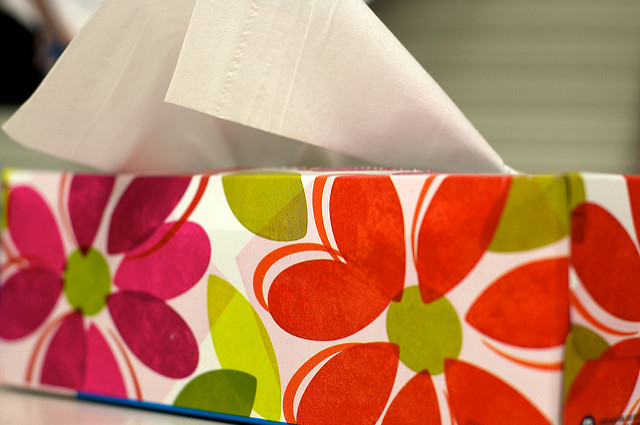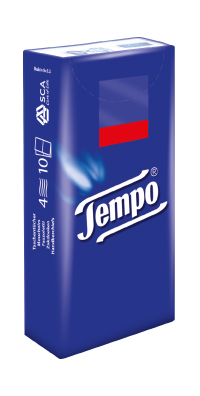
Facial Tissue in Germany and the US
Winter time often brings sore throats and runny noses, but why should this be a subject for my blog? There’s only one reason: I’m terribly annoyed by American tissues. Time to revive my thoughts on “Little Day-to-Day Differences.”
The fact is that facial tissues in Germany are far more robust than they are here in the States. I can theoretically blow my nose for a whole day in one—and only one—German tissue. Meanwhile, a single sneeze will pull an American tissue apart. Are my expectations too high for facial tissues? I don’t think so. I just want a tissue to absorb as much as possible, to be soft to my skin, and not to break apart when I use it. In short, a tissue has to work as perfectly for me here as it did in Europe.
At this point, some people may be screaming that using a single tissue all day long is disgusting. However, this sounds worse than it is, as German tissues absorb way more than their American colleagues. They are neither larger nor thicker, but they just have the right absorbing component to give me enough dry space to sneeze again and again. This may not be super hygienic, but in my opinion it’s still better than getting snot on my hand.
Tissues are packaged differently
Besides the quality gap, it’s also worth noting that the packaging forms differ. In America, facial tissues are mostly sold in boxes, while the favorite form in Germany (and France) is in pocket-sized packs with 10 folded tissues each.
Where does the difference between German and American tissues come from?
Language gives us a clue about the usage differences. In the US, you call them “facial” tissues. According to Wikipedia, facial tissues as we know them today were first introduced by Kimberly-Clark Corporation in 1924 as Kleenex. At the time, their purpose was to remove cold cream or makeup!
A few years after the introduction of Kleenex, the company’s head researcher tried to persuade the head of advertising to try to market the tissue for colds and hay fever. The administrator declined the idea but then committed a small amount of ad space to mention of using Kleenex tissue as a handkerchief. By the 1930s, Kleenex was being marketed with the slogan “Don’t Carry a Cold in Your Pocket,” and its use as a disposable handkerchief replacement became predominant.
In Germany or France, we use words that translate as “paper” handkerchief (Papiertaschentuch in German and mouchoir en papier in French). According to Wikipedia (again), tissues were invented in 1929 by a German company as an alternative to textile handkerchiefs.
To date, French and Germans produce and use more on-the-go disposable handkerchiefs than facial tissues. To remove make-up, many women prefer cotton rounds.
Are tissues just a question of quality?
In the United States and in France, the name Kleenex has become generic: regardless of the brand, people use the term Kleenex to refer to any facial tissues. This is not the case in Germany, where Kleenex never ousted Tempo. I suspect that the German enthusiasm for high quality has something to do with this.
Some final thoughts
I see 3 methods for solving my tissue problem.
I could reduce my expectations and accept the poor quality of American facial tissues. Instead of grasping blindly for a tissue during the night, I could turn the light on and grab a new one every time I need to blow my nose. Then, in the morning, I could collect all the wet, germ-ridden tissues that lay on the floor… On second thought, nope, this is not an option!
Alternatively, I could go back to a good old textile handkerchief. I found them disgusting as a child, but at least I could blow my nose all day long in a single one. Maybe…
My favorite option involves my husband who travels a lot to Europe for business. Facial tissues don’t weigh much, so he can just buy an XL packet once a year. This would be enough for our family to survive a winter. I really like this one!

Image Credit: Fotolia, Colin Harris, Tempo World







I have to agree. I have been living in the US for 35+ years now and still do not like Kleenex. Every year when I visit my family in Germany, one of the first things I buy and put in my suitcase are 2 XXL packs of Tempo which will last us through the cold season.
Good idea, I should really do the same.
As an allergybsiffere who recently.left China for his home in the US, I can’t tell you how much I agree. When China has a better tissue supplier than America, there’s a cognitive problem. Ironically, I DON’T love the pocket pack idea, and although Tempo does these the best, I’m fine with weaker tissues on the road. It’s at home with my fur allergens that I really need a full box of strong, soft tissues from time to time. Let’s hope my people can see the light amd realize Kleenex are rubbish.
Once again you aced this blog by being informative AND funny! I can’t wait to bring this topic up at my next dinner party this Friday I will be young girl in the 1950s, I never left the house without a lovely soft cotton handkerchief embroidered with little flowers tucked into my purse. That was so I could daintily pat my nose if it ran or sneezed. I agree with you: let’s see more of those little individual packets of tissues instead of boxes printed with garish patterns.
Let me know how your party was!